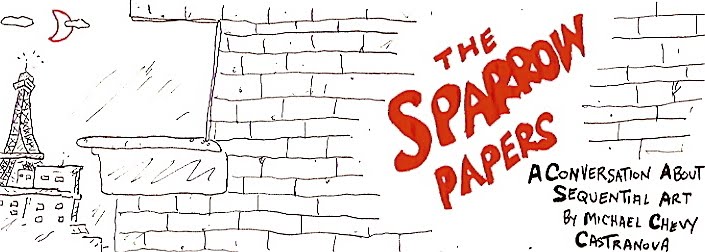 Much of the fun in George O’Connor’s Journey Into Mohawk Country occurs off to the side, away from the main action. A Dutch explorer teases a pair overly eager dogs by pretending to toss a bone for them to fetch … only to be caught by the dogs’ annoyed Mohawk owner. Two other explorers squabble like children while crossing a stream, with both ending up wet and cold.
Much of the fun in George O’Connor’s Journey Into Mohawk Country occurs off to the side, away from the main action. A Dutch explorer teases a pair overly eager dogs by pretending to toss a bone for them to fetch … only to be caught by the dogs’ annoyed Mohawk owner. Two other explorers squabble like children while crossing a stream, with both ending up wet and cold.This incidental tomfoolery is primarily because Journey Into Mohawk Country is O’Connor’s treatment of the real-life journal of Harmen Meyndertsz van den Bogaert, who in December 1634 headed off 100 miles into what we know today as Manhattan, to settle a trade agreement for beaver pelts with the Iroquois. O’Connor contends he altered none of van den Bogaert’s entries.
O’Connor’s accompanying illustrations are delightful and often playful — no mean feat given the dangers van den Bogaert and his companions faced. Frigid temperatures, potentially hostile native Americans, wild animals and becoming tragically lost were constant threats.
But as O’Connor notes in his introduction, van den Bogaert’s “words provide a glimpse into a much different time and place, and above all into his state mind.”
It’s is a very interesting journey.




